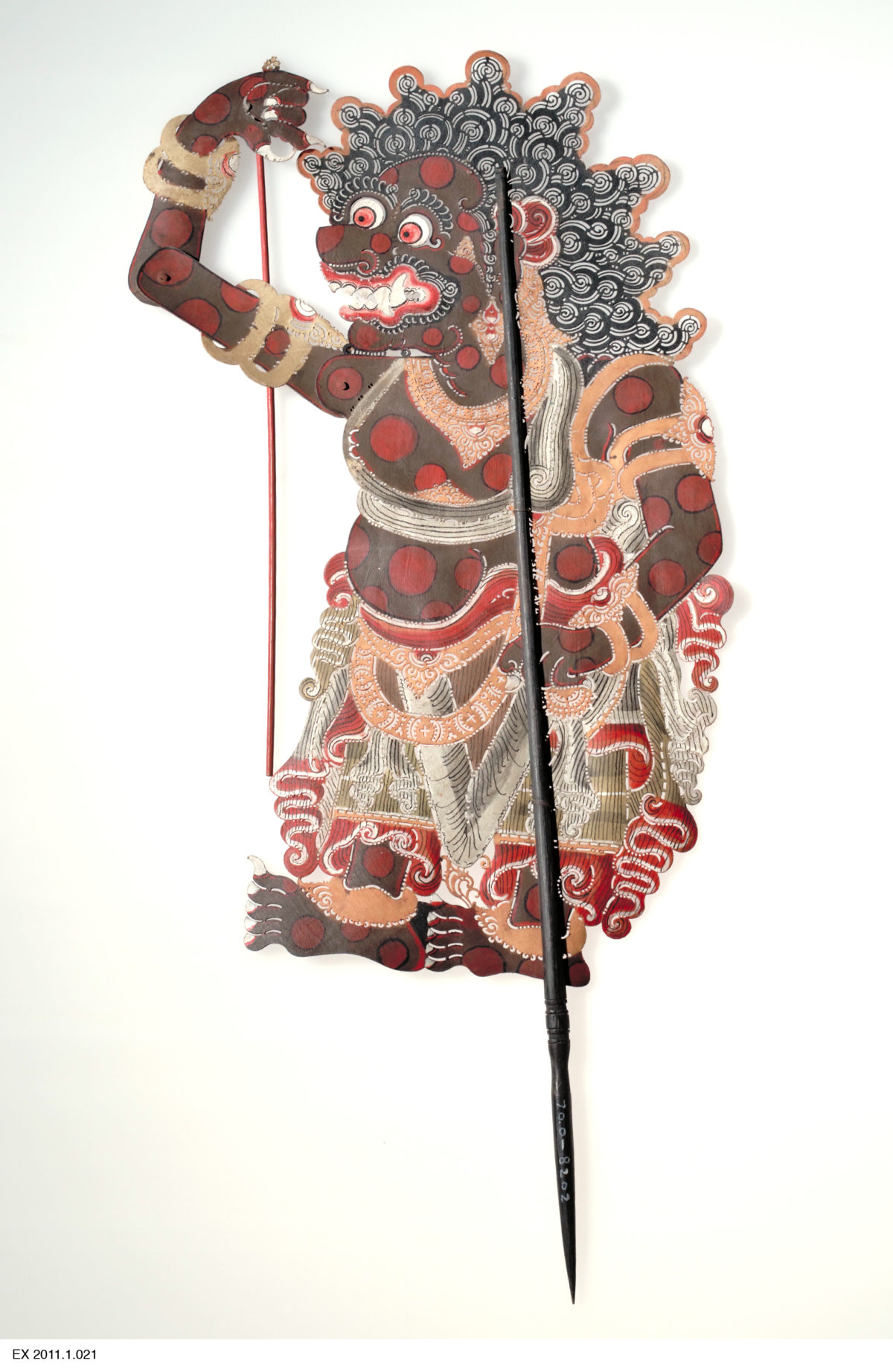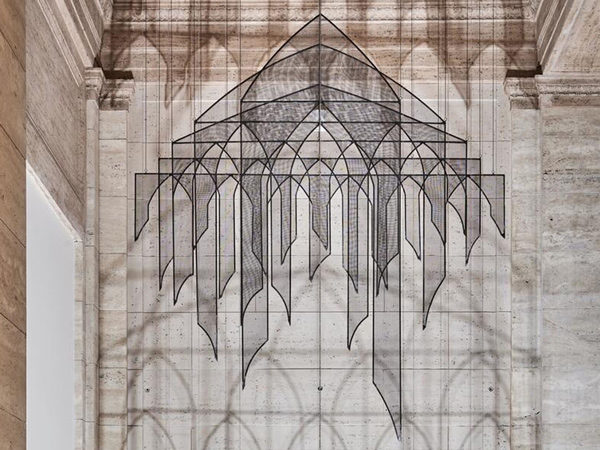Activity
Storytelling in Ritual and Performance in Bali
Balinese stories are continually told and retold. Tales such as the Ramayana are mainly spread through storytelling, shadow plays, masked dance, chants, and other theatrical genres. Learn more.

Kumbhakarna, approx. 1930–1938, by I Wara. Bali; Negara district, Batuan village, Gianyar regency. Hide, wood, string, and plant fiber. American Museum of Natural History, 70.0/8202.
Storytelling in Ritual and Performance in Bali
Balinese stories are continually told and retold. The Kayonan is the first and last puppet seen in the Balinese wayang shadow theater. As it dances, it symbolizes the living tradition of storytelling that deeply explains and entertains, morally educates and brings communities together.
Tales such as the Ramayana are mainly spread through storytelling, shadow plays, masked dance, chants, and other theatrical genres. Dancing, music making, painting, and theater are offerings to the gods, as well as entertainment for people. Art, ritual, and performance overlap in Balinese culture in various ways. For instance, when properly carved and sanctified by a priest, a mask comes to be thought of as embodied by a deity. Worn during a ritual dance, the same mask takes on the special role of a protective force. These stories and their enactment through daily rituals and performances are integral to keeping balance and order in the universe.
Storytelling (Wayang Kulit)
“Rahaina … As the world is formed, I ask permission to tell the story. The world is created out of the great nothingness, by the Great Teacher. The word is sound and the word is written symbol. With these, I shape the story, coming from India, now continued here….”
Shadow master’s invocation in the beginning of a performance (Translated by Mary Zurbuchen, in “The Language of Balinese Shadow Theater”).
Wayang kulit is one of the oldest forms of storytelling in Bali. Stories are most often drawn from the Ramayana and the Mahabharata (the other major Indian epic), but also from indigenous Indonesian literature. Wayang means shadow and kulit means leather, because most puppets are made of buffalo hide.
The shadow master (the “dalang”) sits in back of a screen of about 4 by 8 feet next to a box of up to 100 puppets. During the performance, the dalang must change voices to suit each character, at the same time striking the puppet box to give cues to the musicians playing bronze-keyed gender (sometimes also with drums, flutes, and gongs) sitting just in back of him or her. A dalang must be an expert in knowing and interpreting literature, in puppet making and movement, in singing and directing the music, and, of course, in making jokes.
Storytelling Through a Contemporary Lens
In the center of many villages in Bali, standing majestically just outside the temples, is an unimaginably huge banyan (Balinese: bingin) tree. Fifty-foot-long branches plunge underground, to resurface and soar again upwards like living dragons. The leaves of these sacred trees hold healing powers. Meetings, prayer, arts, and commerce take place under the shade of their branches. They are living symbols of Balinese culture, connected to nature, place, and history. How does Balinese culture continue to thrive? By growing new branches on an ancient tree.
In forms such as the visual arts, shadow theater, and masked dance, ancient stories from Bali and from the Indian epics of the Ramayana and Mahabharata are recontextualized. By adapting and recreating these stories the Balinese keep culture alive and meaningful. This keeps the stories relevant and ensures their survival.
How are they recontextualized? Translators draw parallels and adapt the stories to current times. For example, in Balinese shadow theater retellings of the story of Rama, the clown servants Tualen and Mergdah translate for their masters, Rama and Sita. At the same time, the clown figures might relate this classic love story to a wedding in the village. Ravana, the ten-headed evil king, might be shown to symbolize carbon emissions from factories and transportation that are holding nature, symbolized by Sita, hostage.
It is so late at night that you can’t guess the hour. At the end of the play—after the forces of good have chased away the forces of evil (for now)—the shadow master plunges the mighty kayonan Tree of Life puppet firmly into the banana tree trunk that lies across the bottom of the screen and acts as a puppet holder. The shadow master ends the story with this utterance sung out into the night, following the audience as they get up off their mats, take up sleeping children, and go home discussing the performance and the story.
“The fighting is finished, but the story goes on forever.”






